Home-bartending ought to be relaxed and more times than not, hassle free. At home, you’re in your own element, catering to what you and your guests enjoy. It’s not bartending while being bombarded by spilled out drunken orders that require speed, precision, multi-tasking and sometimes a little flair. It's about having FUN!
If you think you can’t make cocktails because the idea of all of that mixing seems too much bother, it doesn’t have to be. It’s a lot simpler than you imagine and with the right kit, can be enjoyable to do and give a real sense of satisfaction before you even take your first sip.
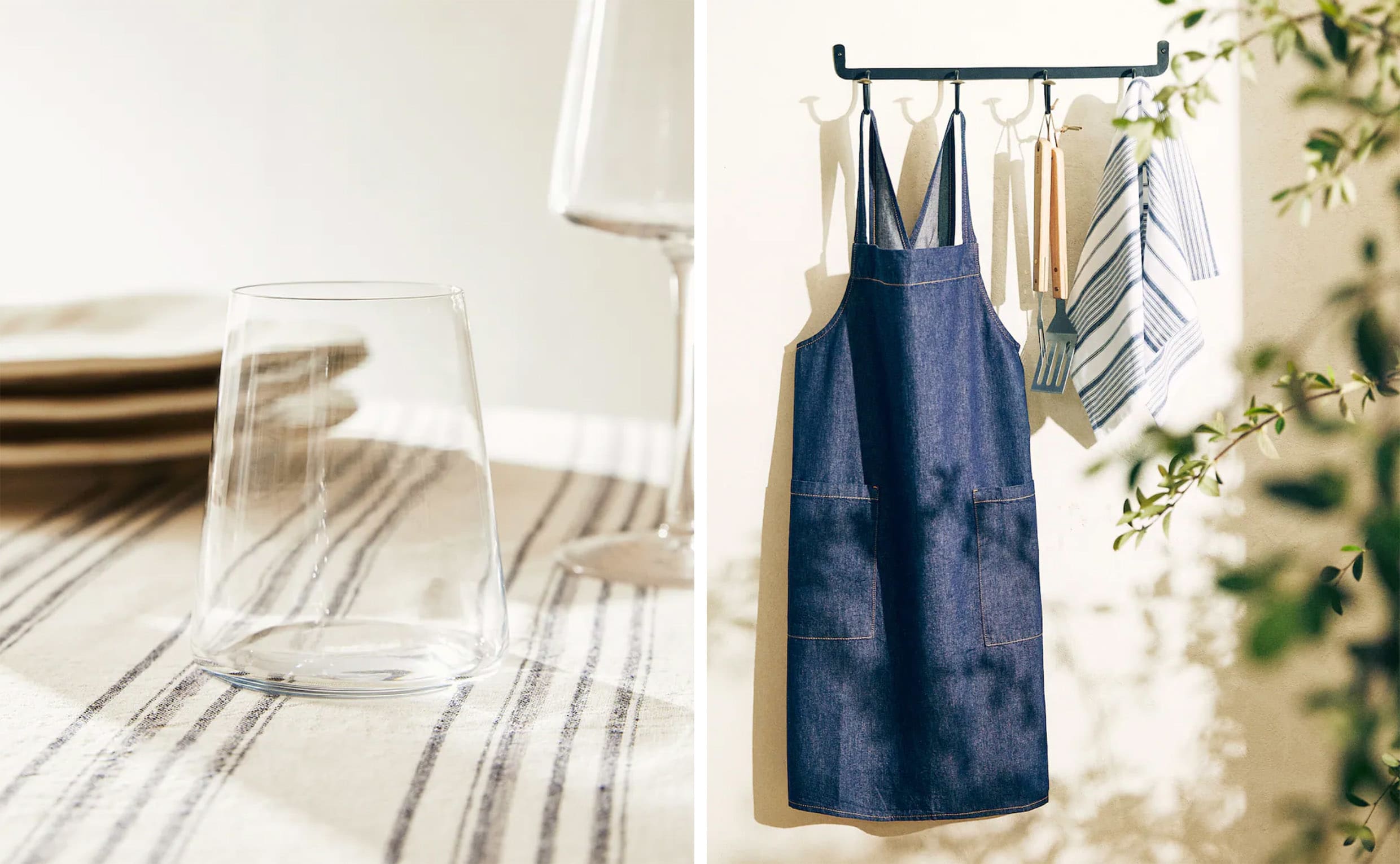

Most adapt what they already have in the cupboards when they first start out with home cocktail making. Their favourite glass, the kitchen pinny, an egg cup as a jigger, a Pyrex measuring cup as a mixing glass and jam jars as shakers. Nothing wrong with that.
But trust us when we say, it’s a lot easier with the right tools and a lot more enjoyable when you use well designed objects that are fit for purpose. The results are more consistent too.
Put simply, owning quality equipment and beautiful glassware can significantly step up your cocktail game when it comes to both taste and aesthetics.
When you consider cocktails as a luxury, upskilling and upgrading your home-made drinks makes even more sense too. How many times have you gone to bars and restaurants and drooled over an elegant Nick & Nora or an elegantly textured highball? So much of the joy of drinking cocktails is that first impression, it’s the experience of it in your hand and its presentation. Why not try and come closer to that at home!
It’ll never be the same but just like plating up your dinner in an elegant way and eating at the table elevates the moment compared to takeaway boxes from the sofa – cocktails in the right glassware do the same. And when it comes to making it? Well, if you are going to make your own, the entire process might as well be as pleasurable as possible from the minute your reach for the bottle.
Here is where to start to step up your game.
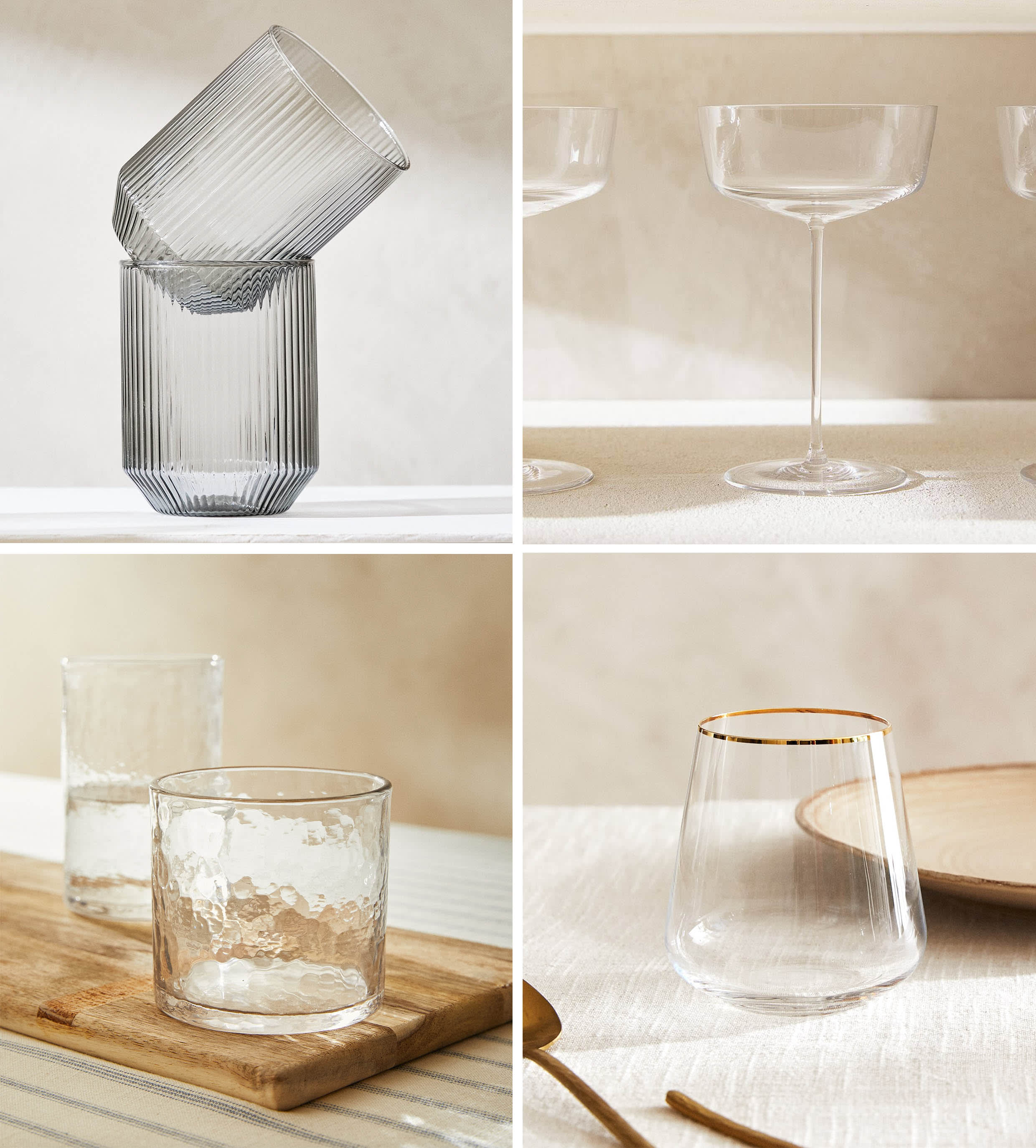

Upgrade Your Cocktail Glassware
If you live with lawless cats or young children, endless shelves delicate glassware is an unattainable goal. That’s okay – you don’t need it and focusing on a quality selection of the ‘Big Three’ (coupes, highball and old fashioned) is where to focus your attention.
Consider versatility, function, durability, capacity and of course aesthetic. Let’s break these down as we go through each style.
Straight-Up Serves – Coupe, Martini, and Nick & Nora’s:
Coupes range between 160ml – 280ml and that’s a big variation. Tristan Stephenson, Author of The Curious Bartender series stresses that “sensible sized coupes” that can be versatile enough to serve up a small martini followed by a ‘higher volume’ shaken cocktail” like a Clover Club or Espresso Martini are paramount to a good home drinking experience.
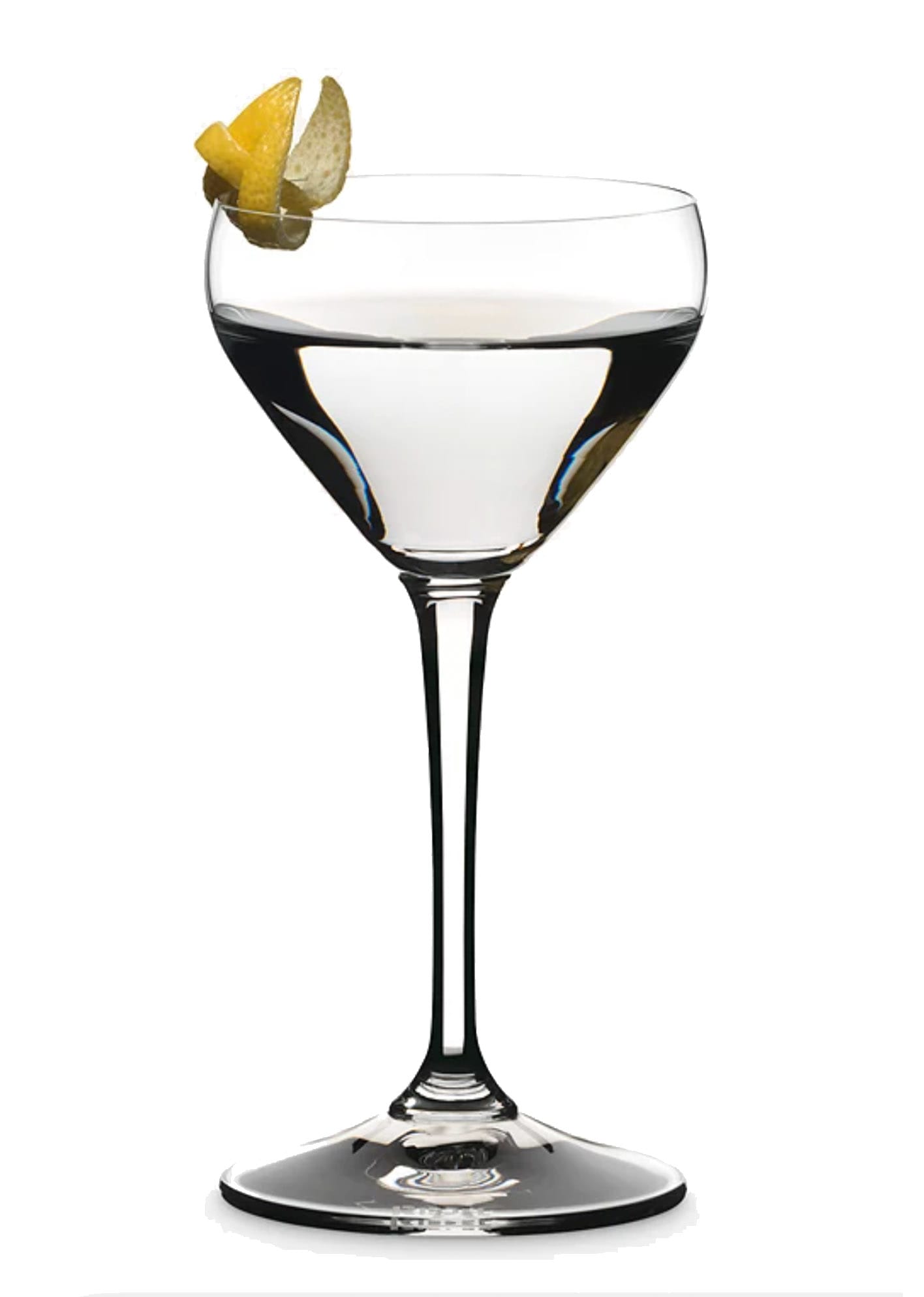

Coupes are significantly easier to handle when it comes to sipping straight-up cocktails than V shaped Martini glasses. Having more of a flatter bowl shape ensures that all the time and effort put into making the cocktail itself, stays within the comfort of the glass.
You are also far more likely to find reasonable volumes (V shaped martinis are frequently oversized) and Coupes tend to be less top heavy – meaning they are the perfect harmony between practicality and sophistication.
Less frequently seen is the Nick & Nora.
It has our hearts a flutter as their petite profile (typically less than 150ml) means that it feels like a sneaky treat for a school night, and just the right size for a pre-dinner aperitif that has all the glamour to make it feel special without the excessive volume to make it feel overly indulgent. Shapes and designs vary but look at Nick & Nora glassware as a great addition if you like booze forward cocktails (whose recipes tend to have less ML).
TOP TIP – Consider durability, balance and capacity when choosing stemmed cocktail glassware. Coupes and Nick & Nora’s are most likely to deliver the best combination.
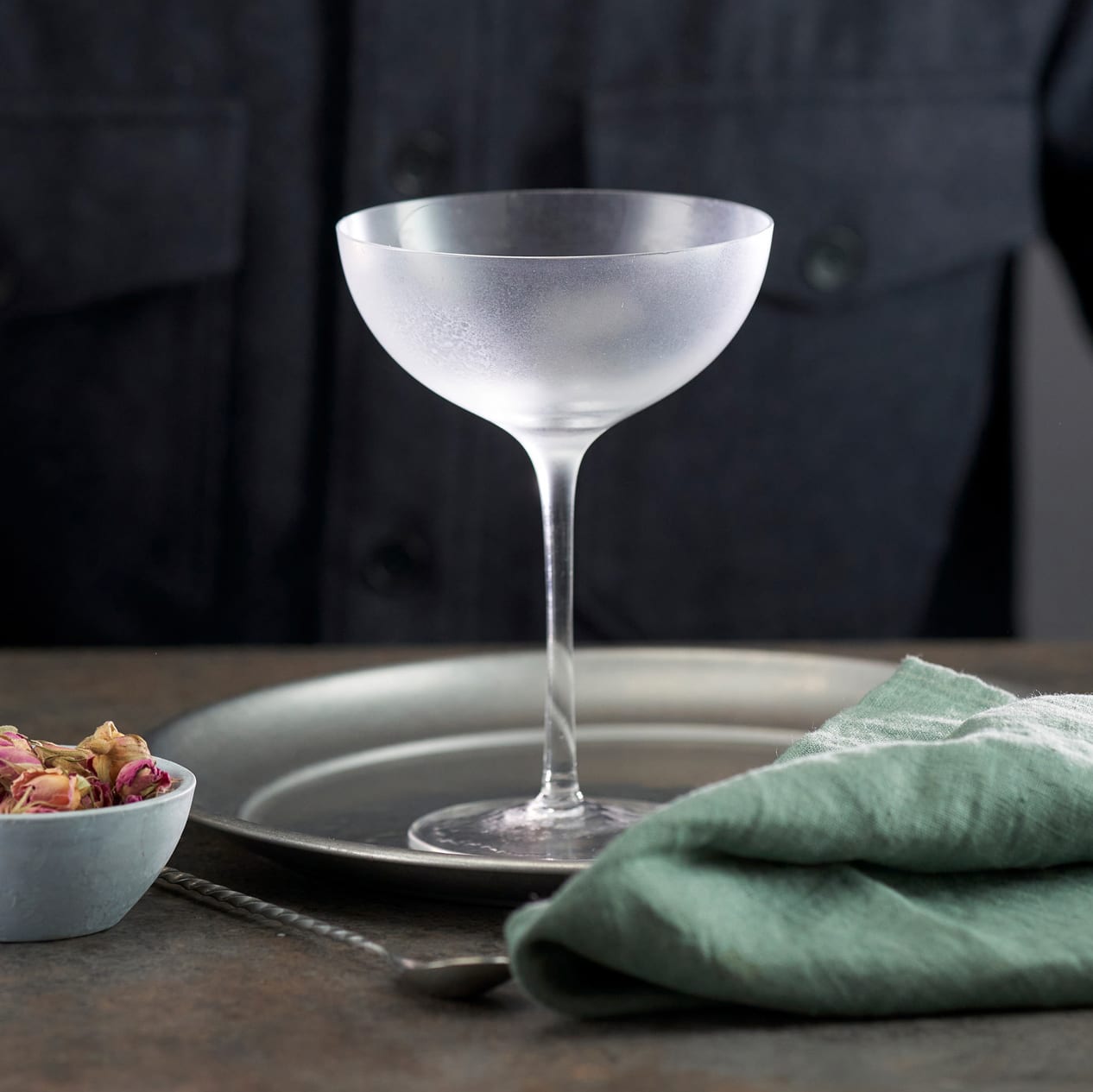

Long Serves – Highballs & Collins:
Time for the long drinks, which is what most home drinkers have already, and most home drinkers use frequently given that the simplest serves all involve spirit and a mixer. When it comes to picking your longer serving vessels for your G&T’s, Paloma’s and Bloody Mary’s – it pays not to use your everyday water glasses. Simply having a slightly more refined option compared to the tried and tested practical cups will lift the moment and give it a sense of occasion. Even on a rainy Tuesday night after the commute.
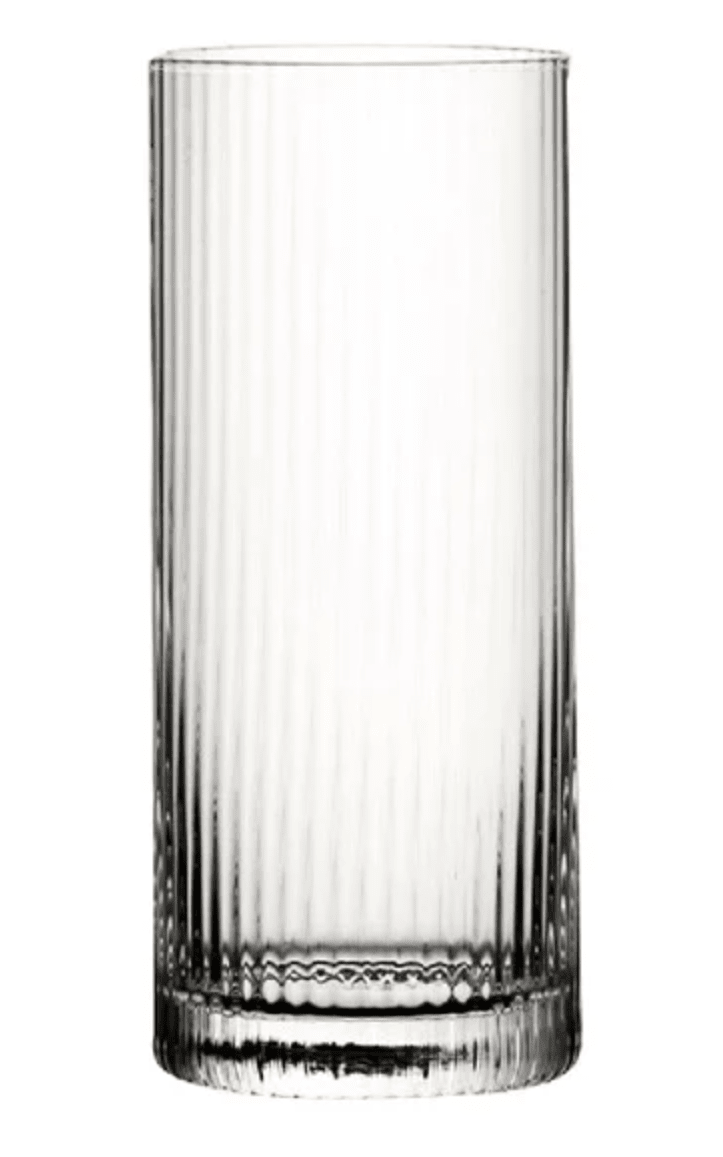

Although it maybe perceived as being more “premium”, having a ridiculously heavy Highball or Collins will just turn into a chore to drink out of when you reach the end of your cocktail.
Think of the drinks you make the most and the type and quantity of ice you prefer. Long and narrow might look elegant, but if you can only stack three cubes in there as they have to sit on top of each other, is it really going to work? Texture and weight are great but is that lip too thick to be pleasurable to sip from given the height of the glass and the circumference of the hole?
It’s all a trade-off based on personal preferences.
Fluted or textured crystal are more traditional and formal. They’re the safe ground for gifting, presentation, and versatility. Meanwhile ribbed, etched and art deco styles can inject some fun into the simplest of serves but it’s always worth checking its durability and how easy they are to keep clean. Don't forget that the more subtle options are usually thinner, and while they may not be ornate, they allow you to place the focus on the drink it contains and showcase colour, texture, ice shape and garnish.
TOP TIP – Consider weight, thickness and what you want to emphasise when it comes to picking your taller highball glassware.


Short Serves – Sipping neat or “On the Rocks”:
When it comes to shorter serves, always consider the purpose and function of the vessel before anything else. We’ve separated them into ‘straight & neat serves’ then ‘cocktails’.
Glencairn, angled and double-walled glassware (like the Norlan glass) all suit neat sipping. For example, an angled rocks allows you to nose the spirit better than straight walls, while double walled might keep liquid that doesn’t have ice chilled for longer.
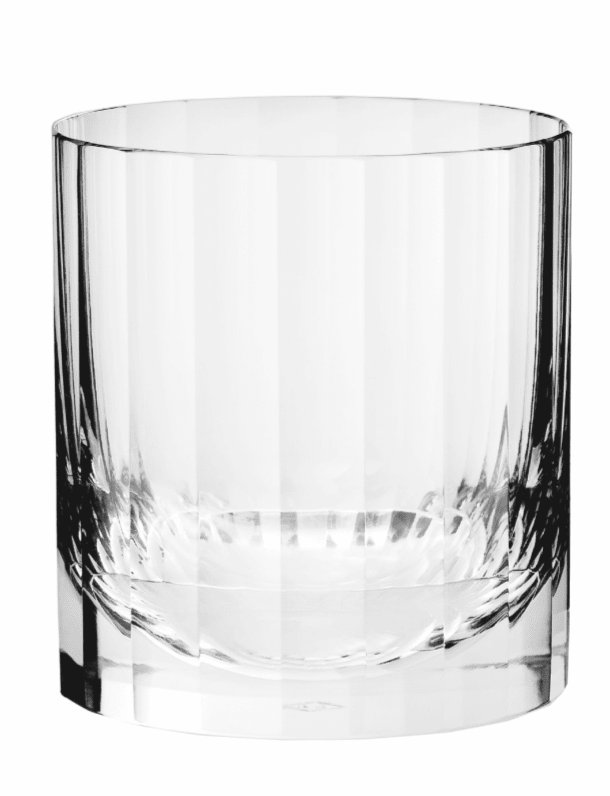

For cocktails, it’s different though - depending on what you’re making, cocktails involve building, muddling, churning, and stirring. So, you want something that’s going to hold up and you also must think about dilution.
A thinner glass means more heat can transfer to the ice, causing further dilution and quickly ruining your hard work. So, it’s better to lean more towards the heavier side.
If you are really looking to invest, it may be worth choosing two sets. One for spirits one for cocktails, but we’ve found that with a bit of searching around, there are plenty of versatile options out there that can cater perfectly to both.
TOP TIP – Consider weight and the angle of the walls. For a super versatile rocks glass you want it bottom heavy, slightly tapered and just the right diameter to hold oversized ice cubes.


Essentials Barware to improve your skills
When it comes to improving your cocktail game, we’ve covered some Tips, Tricks and Techniques, as well as Hacks to help in other articles. We also talk about the importance of ice trays too. Good equipment is at the base of all that so here are some essential barware and what to look out for when selecting yours.
Cocktail Shakers:
We have all wondered at some point about what cocktail shaker is best and we always suggest breaking it down into style, material, function, and volume.
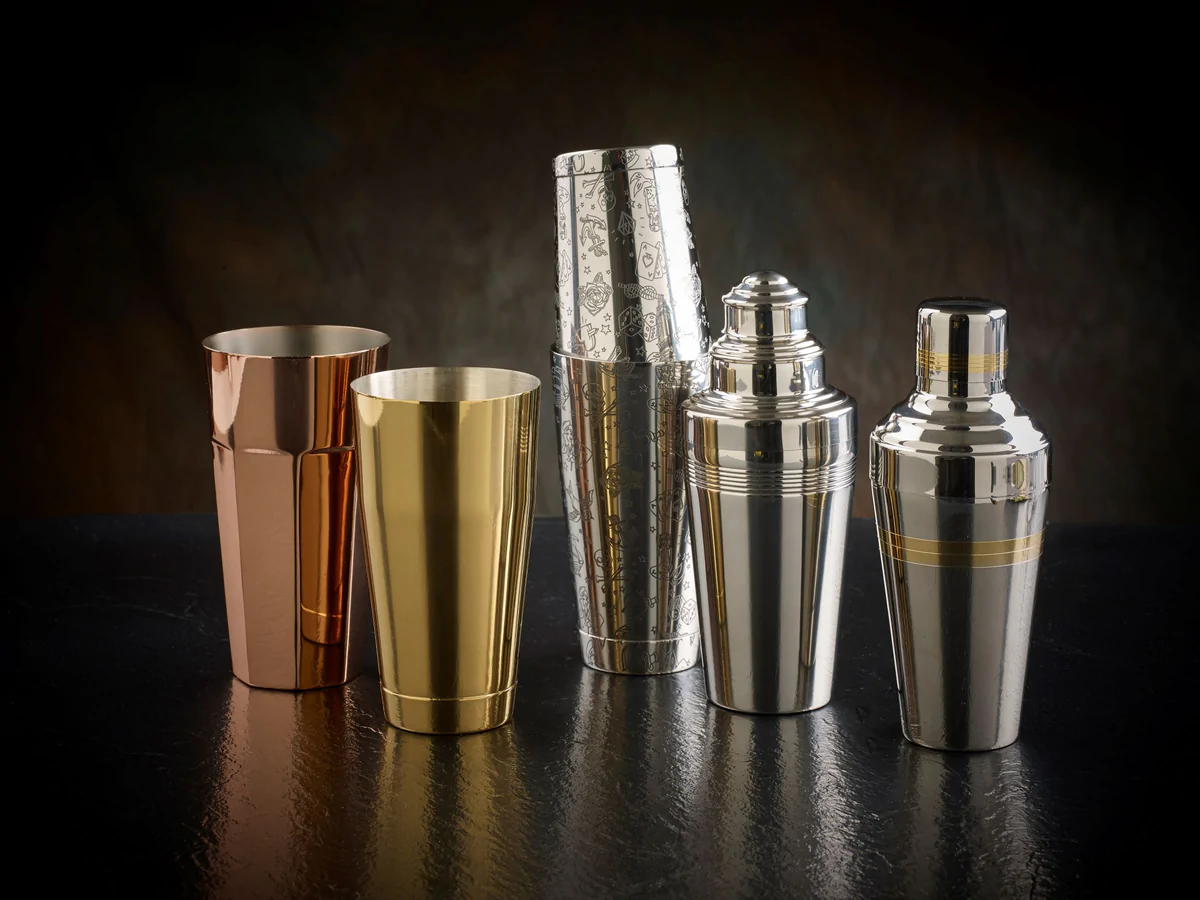
Although different styles of shakers suit different recipes, having a versatile and durable shaker that suits your style is what is important. You have a three-piece Cobbler Shaker that requires a two-handed shake. There's a Parisian or ‘French’ styled shaker that allow longer throw distance from one end of the shaker to the other, as well as an all-round favourite, The Boston Shaker.
When it comes to the Boston Shakers, you have two options: ‘glass-on-tin’ and ‘tin-on-tin’. We cannot stress more about how much lighter, easier, and more durable a tin-on-tin shaker is. It’s less prone to breakage, easier for multi-tasking and easier to clean. Just better on all accounts and they don’t break the bank.
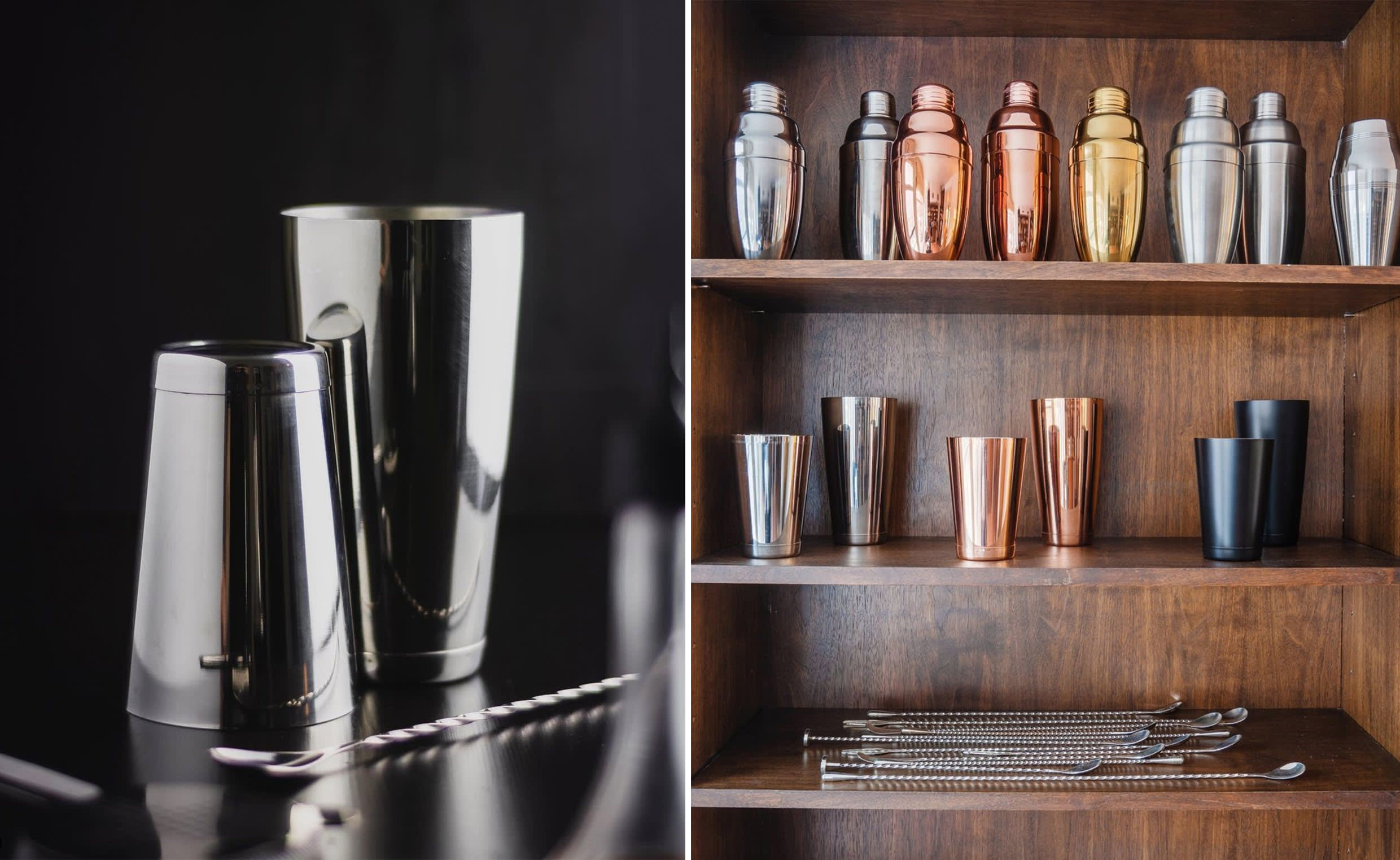

Beakers and Mixing Glasses:
If there’s one thing to stick by when you’re on the pursuit of excellence in cocktail making – not all cocktails need to be shaken. If you’re shaking a Vieux Carré for example – don’t be surprised if you’re met with some disturbed and concerned faces.
When it comes to Beakers and Mixing Glasses, weight and material is what you should be looking out for. Glass Beakers are the way forward while having a thick and weighted beaker allows for better stability and more control over heat transfer.
Many bartenders swear by Japanese styled mixing glasses called Yarai as they are functional, sturdy, and elegant. The weight of the glass then frees up your other hand for garnishing, shaking, and pouring a second cocktail at the same time.
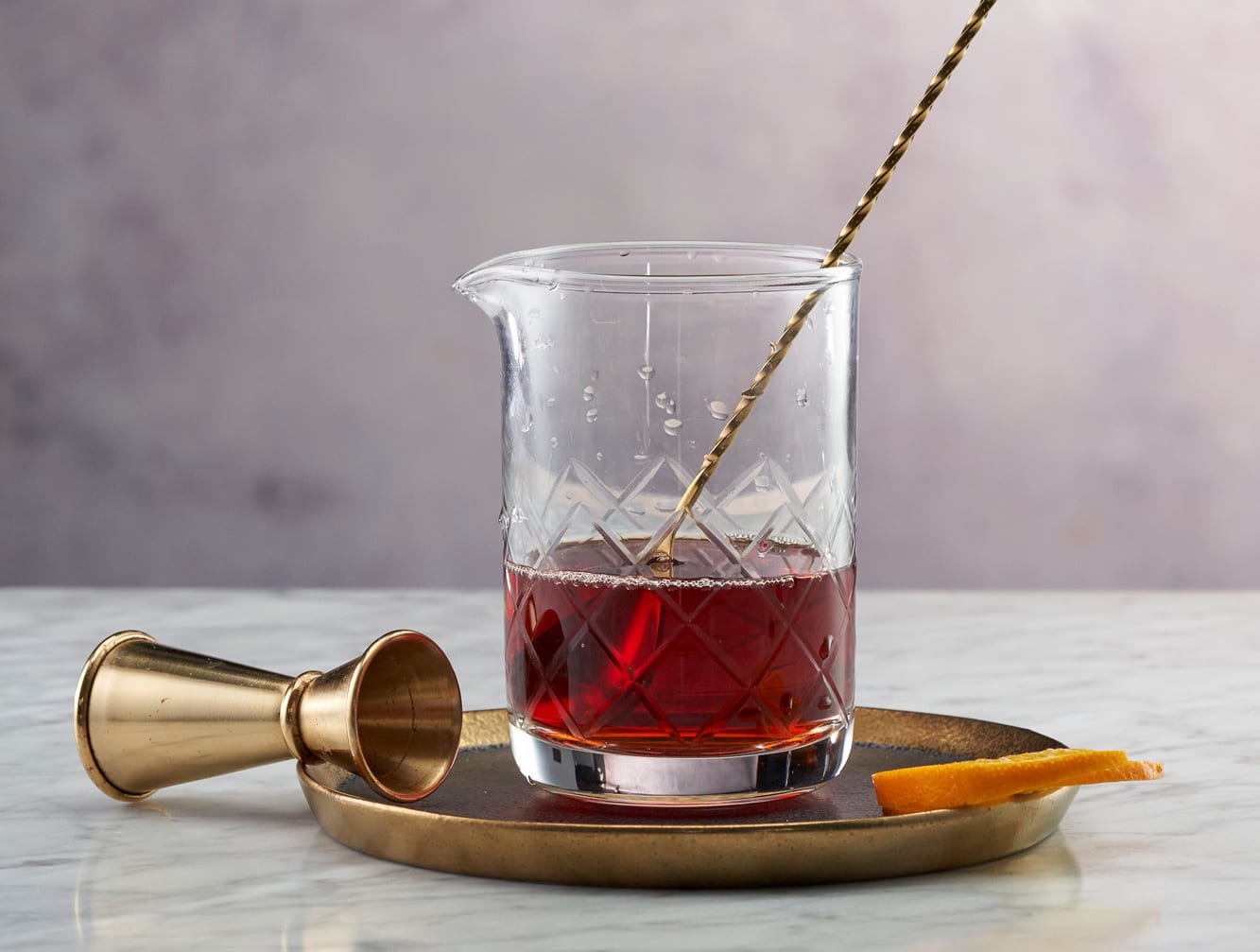

Barspoons:
Yes, there’s even things to consider when picking out your barspoon. Depending on its weight, length, measure, and functionality, a barspoon can either be super easy and pleasurable to handle or it can work against you.
Spiral handles aren’t just about aesthetics. It’s ergonomically more efficient, glides smoothly in between the ice and the walls of the beaker and it makes layering cocktails and shots a lot easier. Japanese barspoons usually range between 30-40cm, while most are around 20cm. Longer spoons are great for mixing pitchers and punches and look amazing - but if you’re serving up a single Negroni, an abnormally long instrument is infuriating and you’ll resort to stirring with your finger out of pure spite.
Another thing to consider is the measure of the barspoon. Having a ‘deeper bowl’ will ease the stress of trying to measure out thicker, stickier, and viscous ingredients like creams, jams and syrups – without making a mess in the jigger.
All that aside though, the end-piece of a barspoon is what to look out for. A fork or trident piece is great for fishing out jarred garnishes like olives or maraschino cherries. Just make sure you’re not bending down quickly around them with an open eye… Blunt end-pieces is a great versatile extra when it comes to layering and crushing herbs and citrus together to express the oils. Bulbous beans or tear drop pieces are a great counterweight if you’re looking to practice your stirring technique.
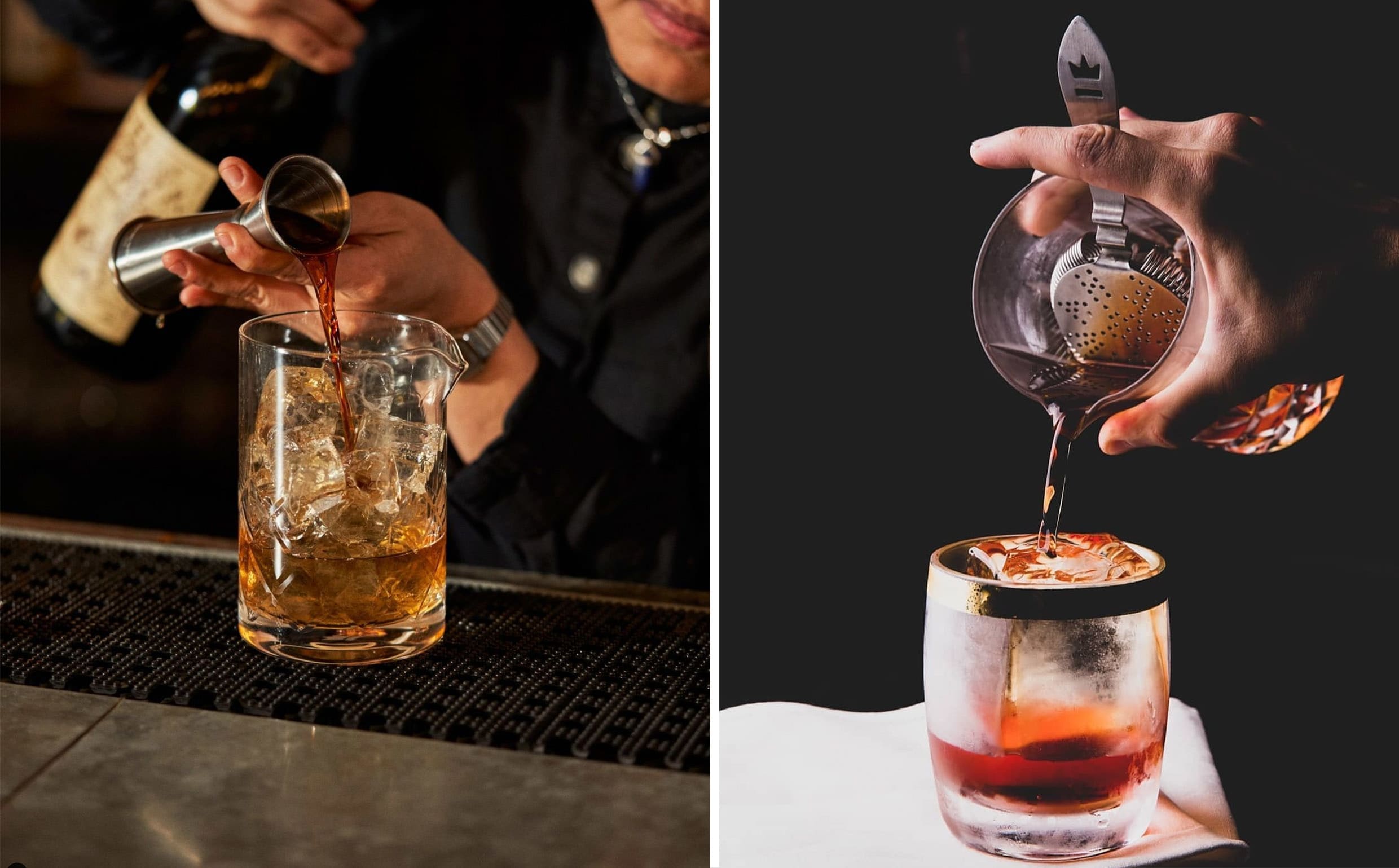

Strainers:
When it comes to strainers, there’s three options worth acknowledging according to Meehan’s Bartender’s Manual. Wire rimmed Hawthorne strainers, colander-like julep strainers and conical fine mesh strainers.
Our advice – from an at home perspective consider the tightness and gauge of the coil. The looser the coil the more frequently you’ll need a conical fine mesh strainer to keep out fine shards of ice or fruit.
Jigger’s:
There is one tool that’s the most essential in completing your home bar –your jigger. How else will you be able to accurately balance the ratio of your cocktails?
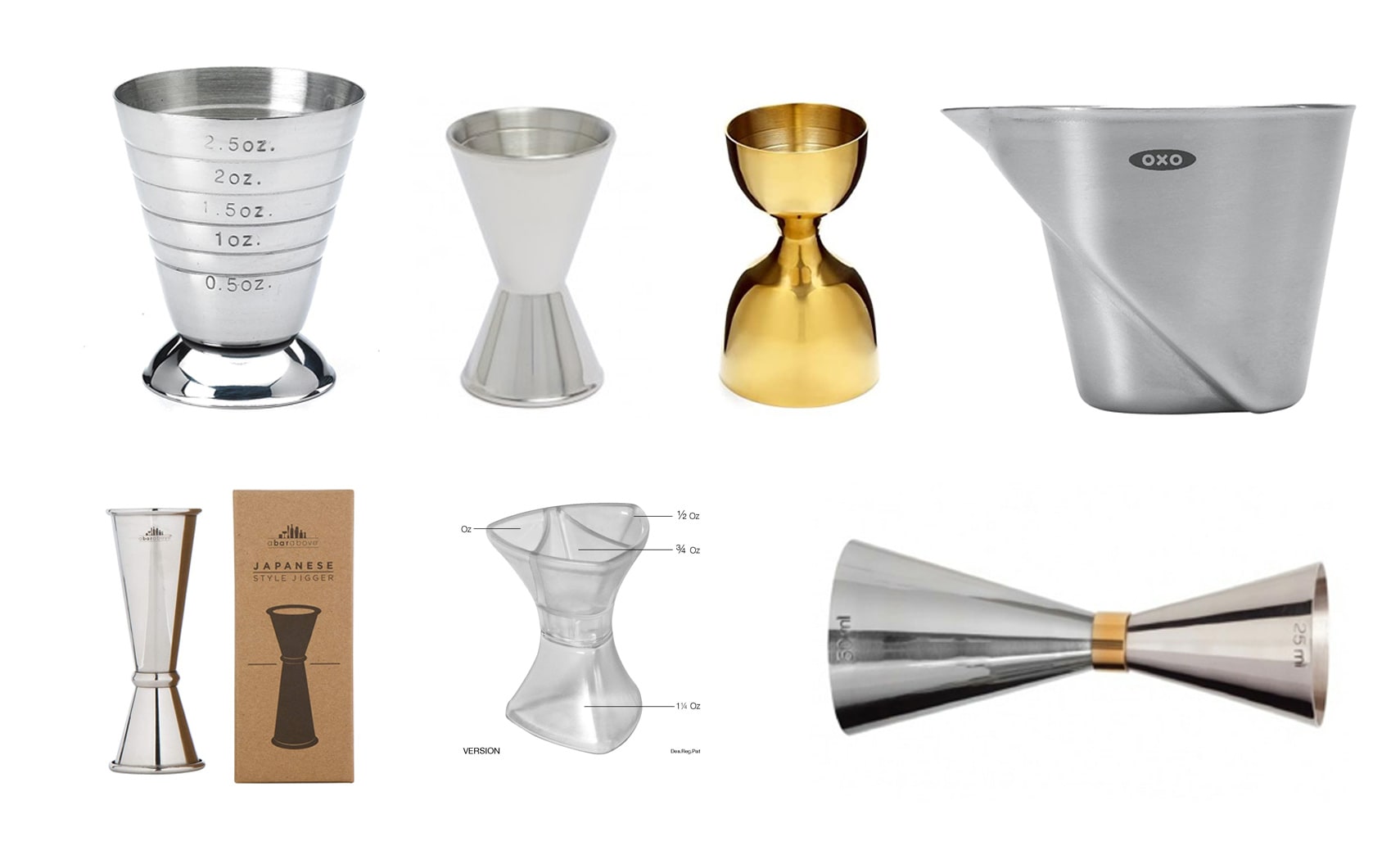

When it comes to what jigger is best, it’s dealers choice. If you prefer working in ml or ounces, choose what suits you but look for those with incremental measures on the inside as they save a huge amount of time and guess work. You don’t need something bigger than 50ml for cocktails, and often, the two sided conical ones are 50ml vs 25ml and show increments of 35ml and 15ml in each side – four of the most frequent quantities sighted in recipe books.
If you prefer a double ended Leopold ‘bell’ design that’s slightly more weighted, go for it. If a single cup with clear cut increments on the side is more your style, who’s stopping you? But it’s these small details that you should be looking out for to help you make your decision.
A good jigger helps with recipe accuracy, makes measuring easy, should feel balanced to hold and soon enough becomes as trusty a tool as your favourite cooking spatula.

